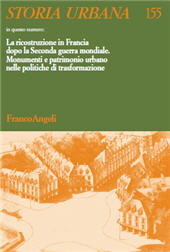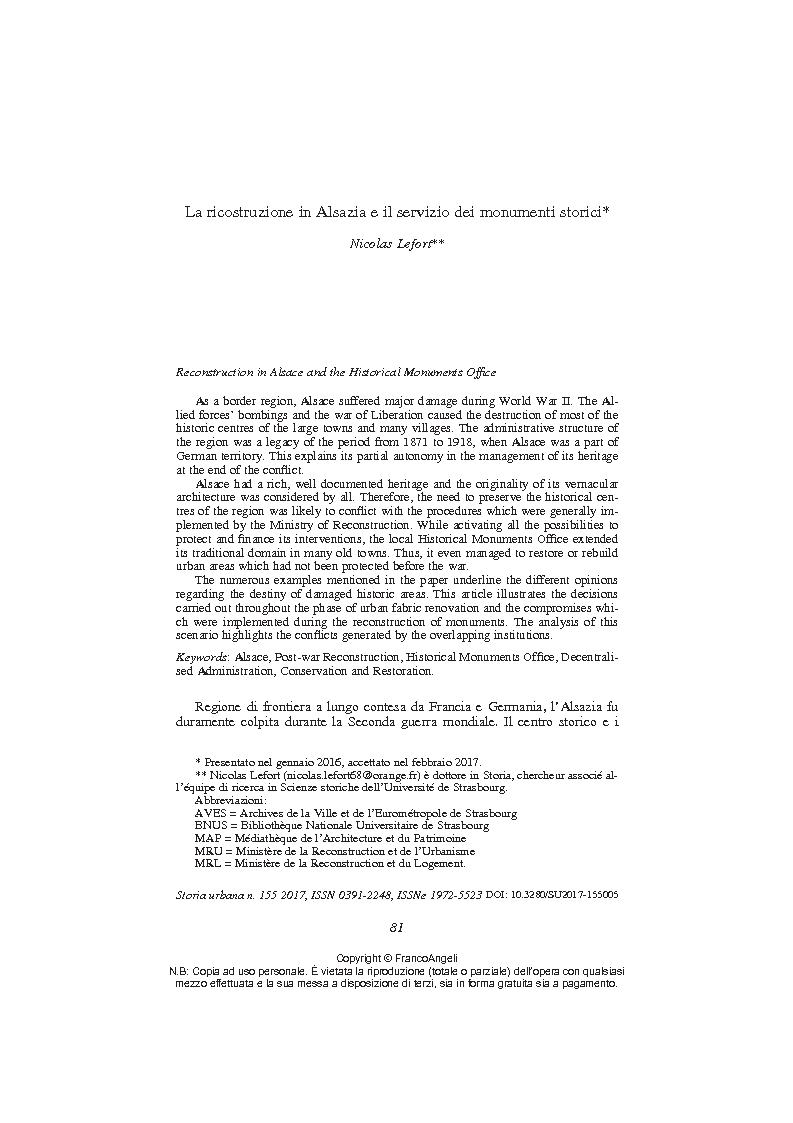La ricostruzione in Alsazia e il servizio dei monumenti storici
81-105 p.
As a border region, Alsace suffered major damage during World War II. The Allied forces' bombings and the war of Liberation caused the destruction of most of the historic centres of the large towns and many villages. The administrative structure of the region was a legacy of the period from 1871 to 1918, when Alsace was a part of German territory. This explains its partial autonomy in the management of its heritage at the end of the conflict. Alsace had a rich, well documented heritage and the originality of its vernacular architecture was considered by all. Therefore, the need to preserve the historical centres of the region was likely to conflict with the procedures which were generally implemented by the Ministry of Reconstruction. While activating all the possibilities to protect and finance its interventions, the local Historical Monuments Office extended its traditional domain in many old towns. Thus, it even managed to restore or rebuild urban areas which had not been protected before the war.umerous e
xamples mentioned in the paper underline the different opinions regarding the destiny of damaged historic areas. This article illustrates the decisions carried out throughout the phase of urban fabric renovation and the compromises which were implemented during the reconstruction of monuments. The analysis of this scenario highlights the conflicts generated by the overlapping institutions. [Publishers' text].
Ist Teil von
Storia urbana : rivista di studi sulle trasformazioni della città e del territorio in età moderna : 155, 4, 2017-
Artikel aus derselben Ausgabe (einzeln erhältlich)
-
Informationen
ISSN: 1972-5523
KEYWORDS
- Alsace, Post-war Reconstruction, Historical Monuments Office, Decentralised Administration, Conservation and Restoration



